How to Spot Fake Amazon Reviews
Fake reviews on e-commerce sites like Amazon mislead consumers and can short-change businesses. With fake reviews flooding Amazon’s platform by the millions, spotting them is becoming increasingly important if you don’t want to get ripped off.
That’s why I’ve written a step-by-step guide on how to spot fake Amazon reviews. I’ll cover the basics of fake Amazon reviews before walking you through methods for identifying, avoiding, and reporting them.
Understanding Fake Reviews
Reviews play a vital role for consumers. In fact, 93% of shoppers say that product reviews influence their purchasing decisions.
Merchants that boost their product listings with fake reviews mislead consumers. The product is made to look better than it really is, and customers are tricked into making a purchase they otherwise might not have made.
Flooding a product page with positive reviews also causes substantial short-term growth in its sales ranking and organic search position. While these benefits only last around four weeks, merchants can realize significant financial advantages from the increased exposure.
Merchants may also bombard competitors’ products with negative fake reviews that lower their star ratings, disparage their efficacy, and dissuade customers from making a purchase. These fake negative reviews may even link to a different product page as a better alternative.
Fake reviews are illegal and the FTC considers them an unfair business practice. But many merchants feel the potential gains outweigh the risks of getting caught. According to one study, increasing an Amazon product’s rating by 1 star leads to 26% growth in sales. A separate Yelp study found that fake reviews correlated with a 5-9% increase in overall revenue.
The Impact of Fake Reviews
Consumers who make purchases based on fake reviews aren’t getting what they’ve paid for. They may find their purchase still meets their needs even if it was misrepresented by the review, or they may feel they’ve completely wasted their money. This can lead to frustration with, and loss of trust in, Amazon and similar online markets that rely on reviews to build trust in their consumer base.
Nearly one-third of businesses say they’ve been damaged by negative content. For sellers, fake reviews undermine their reputation and lead to a potential loss of customers and revenue. Fake negative reviews may even impact a seller’s rating on Amazon, reducing their brand’s visibility and sowing distrust among potential customers.
How Do They Work?
Currently, Amazon is facing a slew of organized fake review operations. To avoid detection from the company, merchants or even brokers — online firms that sell packages of fake reviews to Amazon sellers — advertise and communicate with customers through social media platforms like Facebook, Reddit, and Craigslist. They offer customers financial incentives such as free products, cash, or both, in return for a fake review.
Often, fake reviewers will have never tried the product. But some sellers or brokers will ask reviewers to purchase the product before receiving a refund. This exploits Amazon’s “Verified Purchase” system (created to help tackle the issue), which tags a review so that fake reviews appear legitimate. Other merchants may contact legitimate shoppers with incentives to leave a positive review after they’ve completed their purchase, which also isn’t allowed.
Content creators might be paid to create authentic-sounding fake reviews or to cram reviews with keywords to boost a page’s ranking.
More recently, natural-language processing platforms like ChatGPT have been used to create grammatically correct fake reviews quickly and at scale. Some firms use machine-learning models that can spin scraped review content to mass-generate fake reviews.
What’s Amazon Doing about the Problem?
While Amazon claims that less than 1 percent of reviews on the platform are fake, a 2020 study from fake review detection experts Fakespot found the number to be closer to 42 percent.
Amazon’s Fraud Abuse and Prevention team uses cutting-edge AI and machine learning tools to weed out fake reviews. The company’s natural-language processing techniques and deep graph neural networks can analyze thousands of data points, including an account’s review history, sign-in activity, and more.
In 2022, Amazon blocked more than 200 million fake reviews and reported over 23,000 social media groups and more than 46 million group members and followers for fake reviews.
Amazon can suspend and terminate accounts, delist products, and withhold payments if a review has been faked.
Amazon may also look to the courts for remedy. The company sued over 10,000 fraudulent Facebook group administrators in 2022. By mid-2023, the company had already taken legal action against 94 brokers that facilitated fake reviews.
Amazon also has a couple of initiatives that are designed to mitigate the impact of fake reviews. Other than its Verified Purchase badge, the marketplace’s Vine Program handpicks customers who provide trustworthy and insightful reviews and makes the customers eligible for free products should they leave an honest review.
While these programs do tend to indicate more trustworthiness, they can still be exploited by merchants or brokers who may refund items or offer extra incentives to purchasers to leave a positive review.
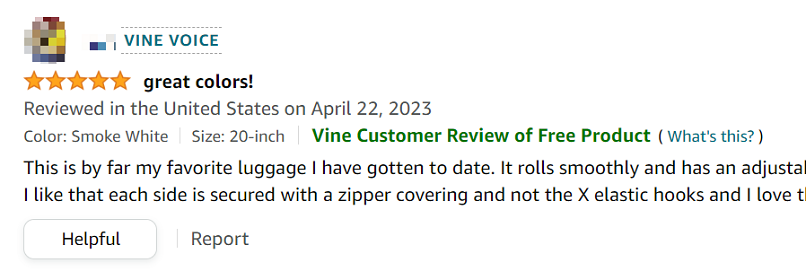 A Vine review on Amazon
A Vine review on Amazon
7 Steps to Spot Fake Amazon Reviews
Thankfully, you can spot Amazon fake reviews by looking for a few telltale signs. But before I walk you through the ways you can spot fake reviews, you might want to consider alternative options.
Why read an Amazon review if you don’t have to? While some products can only be found on Amazon, popular products are often reviewed in other corners of the internet.
You can bypass Amazon reviews altogether by reading independent reviews on trustworthy blogs, news sites, or consumer sites. Wirecutter, CNET, and Which? are just a few legitimate sites that provide in-depth and unbiased reviews.
You can find trustworthy product reviewers through social media channels like YouTube, too. Just make sure you choose a reviewer with a decent following and positive feedback from viewers in the comments.
Unfortunately, sometimes you’ll have no other option than to evaluate reviews underneath Amazon product pages. Perhaps the product you’re interested in is niche or only found on Amazon. Or maybe you’re an Amazon vendor who needs to analyze some suspicious activity on your listings.
You can spot fake reviews by following the steps below to assess their content and context.
Note that, while the following points can indicate that a review is fake, genuine reviews can and sometimes will have some of the same characteristics.
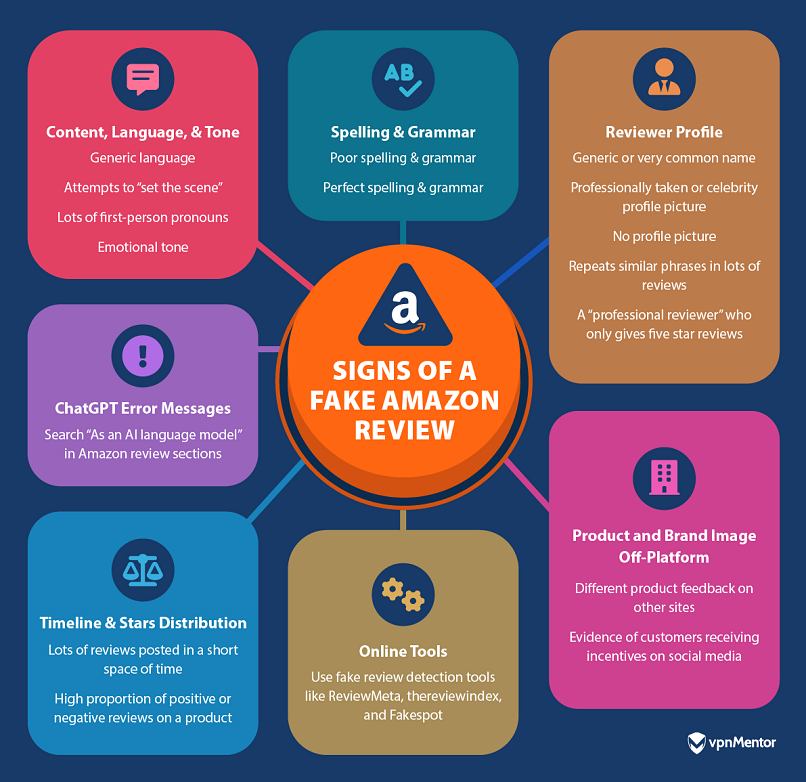
Content, Language, & Tone
A Cornell University study of hotel reviews found that fake reviews are often overly vague and aim to set the scene by describing a person, place, or event. For example, a fake review may focus on the reviewer, the user’s general experience, and their experience in relation to some significant event like their wedding anniversary.
 A fake review that focuses on an event rather than details
A fake review that focuses on an event rather than details
Of course, legitimate reviewers may also mention these things, but Cornell’s study found that genuine reviewers tend to use concrete words and focus on the specifics of their experience. In the context of hotel reviews, they might talk about the “bed,” “bathroom,” and “check-in” process.
Fake reviews tend to use generic language. They’re less descriptive and opt for simple sentences and phrases like “I recommend,” “It saved my life,” or “The best product.” Such short statements may even comprise the entire review.
Fake Amazon reviews may even have generic titles. Stuff like “Awesome” or “Nice product.”
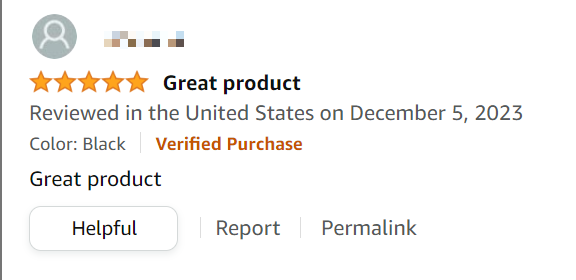 Some fake reviews use generic language
Some fake reviews use generic language
Cornell’s study notes that honest reviews contain more nouns, whereas fake reviews contain more verbs as they attempt to spin stories in lieu of genuine insight. Researchers highlight how fake reviews use more first-person pronouns like “I” and “Me,” too, in an attempt to build credibility.
An overly emotional tone is another giveaway of a fake review. How often do you 100% love or absolutely hate a product? Fake reviews tend to adopt this black-and-white reasoning to persuade you to buy or avoid a certain product. They may highlight extreme feelings of joy, excitement, or anger instead of providing both positives and negatives like most legitimate reviews. Watch out for statements like “I can’t wait to show my partner” or “It’s marvelous.”
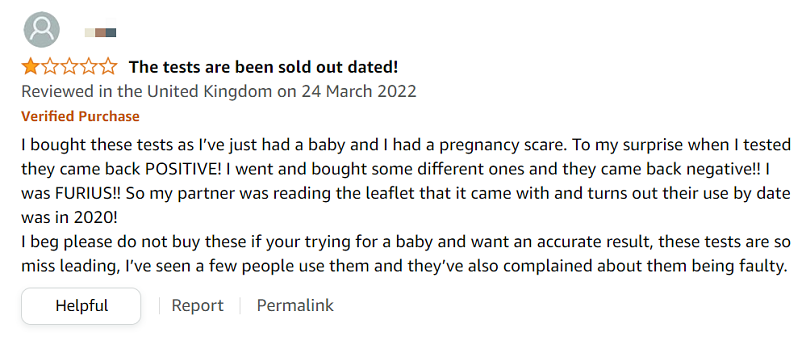
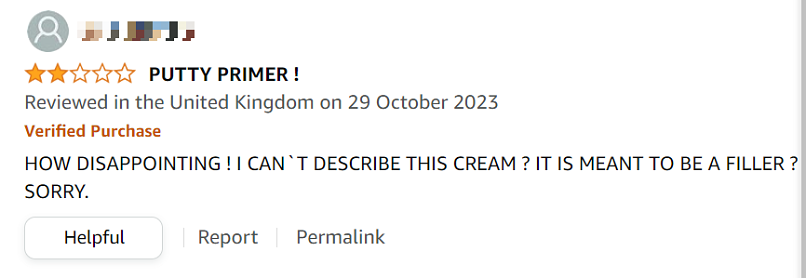
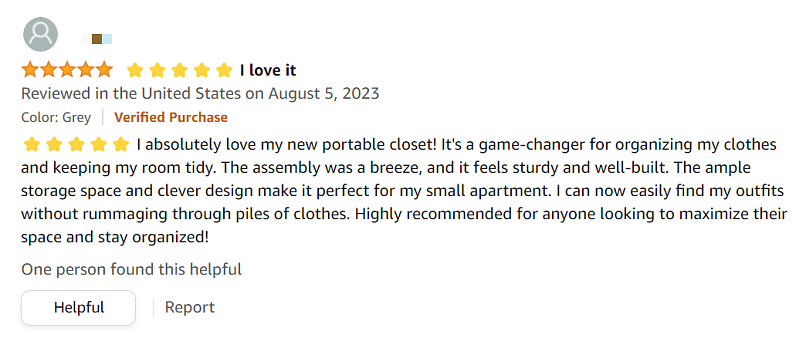 Fake reviews may have an exaggerated positive or negative tone
Fake reviews may have an exaggerated positive or negative tone
A review may also be fake if it:
- Is worded similarly to other posted reviews
- Justifies or defends a product’s cons
- Contains extremely positive feedback with one small negative that isn’t significant
- Is very short (less than 3 sentences long)
- Is a negative review that points readers toward another product (called customer jacking).
Spelling & Grammar
Fake reviews may contain idiosyncratic spelling mistakes and grammatical choices. Sometimes, they may lose track of their point and end up not making much sense.
Content farms are typically interested in quickly mass producing reviews that flood pages with keywords; they’re less interested in quality. These firms may hire non-professional writers, and even non-fluent speakers, from developing countries in order to meet their goals. When people aren’t fluent in a language, they tend to directly translate from their first language, leading to phrases that read strangely or perhaps don’t even make sense.
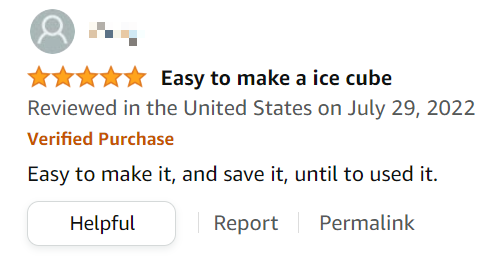 Poor spelling and grammar is common among fake reviews
Poor spelling and grammar is common among fake reviews
That being said, perfect grammar and spelling can also be a red flag. With a simple prompt, today’s chatbots can write several hundred words without a grammatical or spelling mistake. And how many people obsess over the finer points of accuracy while writing an Amazon review? Many legitimate reviews fall somewhere in between.
Reviewer Profile
Look beyond the review’s content and into the reviewer’s account to figure out whether they’re a fake reviewer.
The reviewer’s name can be a pretty obvious sign that they’re not real. Names that are super generic or commonly used indicate that the name has been mass generated and the reviewer isn’t real. Think “John Smith” and “Jane Doe.” Reviewers with middle names that consist of one letter followed by a period are also more likely to be fakes.
Fake reviewers’ profile pictures may appear too good to be true. They’re professionally taken, polished images with perfect lighting and a blank background. They may even appear edited or photoshopped to look even better. Fake reviewers' profile pictures may look this good because they’re stock photos taken from sites like Freepik or Shutterstock.
Other Times, fake reviewers may use images of celebrities as their profile pictures. If they look familiar, that’s probably why. And if the same profile picture appears in multiple reviews, that’s because they’re fake. Many fake reviewers don’t have a profile picture at all to hide their identity.
 Many fake profiles have a generic name and no profile picture
Many fake profiles have a generic name and no profile picture
Clicking the writer’s profile and looking through their other reviews is a great way to take stock of their legitimacy. You should look for patterns in their language. If a reviewer repeats the same or similar phrases persistently, it’s a sign that they’re trying to add specific keywords under several different products.
Fake reviewers may also try to explain their behavior by claiming to be professional reviewers who receive products in return for honest reviews. If the ratings on their reviews are almost exclusively five stars, odds are they’re a fake.
Timeline & Stars Distribution
Under product listings, the timeline of reviews and distribution of star ratings can also indicate whether a product has been flooded with fake content.
A page’s reviews are likely fake if there are dozens of positive or negative reviews all posted within a short period of time outlining similar recent information. The time gap between this cluster of reviews and those reviews before and after it may be much larger.
Review timelines like this indicate that the brand paid for and published fake reviews in bulk. Or, perhaps the brand is trying to quickly recover the product’s star rating with a slew of five star reviews. If the cluster of reviews are negative, a competitor may be trying to sabotage a rival product.
Of course, some products are just really good or really bad, but usually, there are a fair portion of ratings that fall in between. Amazon products that have an extremely high proportion of one star or five star reviews may feature fake reviews. That’s because brands are often paying for extremely high or low ratings; no one's paying for two or three star reviews. If 70% of a product page’s reviews are four or five stars and the other 30% are one star reviews, with nothing in between, the reviews may be fake.
Product and Brand Image Off-Platform
If you suspect an Amazon product’s reviews may be fake, moving off-platform to look into the product or brand a little more closely can provide solid evidence.
You can cross-reference the product’s Amazon reviews with reviews elsewhere on the internet if the product is listed on multiple sites (such as the brand’s own). While a brand may have the foresight to pay for reviews across all of its platforms, many don’t bother. If you’re not seeing similar feedback and ratings on other sites, the product’s Amazon reviews could be fake.
Research the brand online too. You may be wary if the company doesn’t have its own official website. Look at the company’s social media pages; are followers posting evidence of incentives or giving different feedback compared to the Amazon reviews?
ChatGPT Error Messages
You can sometimes identify fake reviews that have been generated using ChatGPT by searching for an error message that commonly appears.
ChatGPT mentions the disclaimer “As an AI language model” when it’s prompted to create content that’s banned or offer an opinion on something subjective. Fake reviewers using ChatGPT to quickly auto-generate content frequently copy and paste the model’s output without reading it thoroughly. Thus, fake reviews can contain this error message.
Searching for the phrase in Amazon’s review section’s search bar will highlight any reviews that contain the phrase.
Online Tools
Failing all else, there are online tools you can use to assess the trustworthiness of a product’s reviews. These services often use algorithms to detect fake reviews before giving you various options, such as allowing you to see the product’s adjusted star rating.
Here are three of the most popular fake review detection tools:
- ReviewMeta uses an algorithm to figure out which reviews are likely fakes and which are natural. When you paste the product’s link into ReviewMeta, the platform will analyze the page and grade the product’s reviews. ReviewMeta highlights the most- and least-trusted reviews, raises issues or positives with the page’s reviews, and ultimately gives you an “adjusted rating” that’s based on natural-sounding reviews alone. In addition to its site, ReviewMeta also comes free as an app and a browser extension.
- thereviewindex works much the same as ReviewMeta. Paste in the Amazon product’s link to receive a score for the page’s reviews. thereviewindex also highlights spam and sorts reviews by the type of feedback given. The service is also available as a browser plugin.
- Fakespot is one of the most popular fake review and scam detection tools. You can add it to your browser for free to grade the quality of a product’s reviews, highlight key points from user reviews, and provide corrected product ratings as you shop. Fakespot will also highlight scam sellers, and as a bonus, will shop around for you to find the best deals.
How to Report Fake Reviews
You might want to report any suspicious reviews to Amazon. Reporting reviews helps Amazon deal with the problem and reduces the impact on other customers and businesses.
In its review policy, Amazon states that it has “zero tolerance” for misleading or manipulative review content. Amazon also prohibits any reviews that are designed to promote products. To be clear, fake reviews are in breach of Amazon’s review policy.
Amazon’s Review Policy
Amazon doesn’t allow the following types of reviews:
- A review by a person with a financial interest in the product
- A review by a person with a close personal relationship with the product listing’s owner, author, or artist
- A review from the product’s manufacturer, who’s masquerading as a consumer
- Multiple negative reviews on a listing from a single shopper
- Reviews created in exchange for money
- Reviews of games created in exchange for in-game currency
- A negative review from a vendor on a rival product
- A positive review on an album from another artist in exchange for a positive review
Source: Amazon
Once you’re sure a user review has violated Amazon’s review policy, you can move to report the content to Amazon.
You can follow the step-by-step instructions for this process below:
- Step 1: Open Amazon and sign in
- Step 2: Navigate to the suspicious review
- Step 3: Click “Report” below the review
- Step 4: Select the appropriate option (“Fake”) in the pop-up window
- Step 5: Click “Submit”
Amazon will then analyze the review before removing it should it breach their guidelines.
If a seller contacts you directly with the offer of compensation to write, edit, or remove a review, you can report the incident to Amazon by emailing community-help@amazon.com. Be sure to reference the product’s name along with an image of the offer in your email. Amazon will then investigate the incident.
If you’re an Amazon seller in the US and your business is being damaged by fake reviews, you might want to go one step further and report the content to the Federal Trade Commission (FTC), America’s trading standards agency.
Business owners can report suspicious online reviews via the FTC’s ReportFraud page.
The Bottom Line
Fake reviews can be an extremely frustrating part of the buying process, but they don’t have to be. By following the steps outlined in this guide, you should be able to effectively spot and avoid fake Amazon reviews.
Reporting fake reviews on Amazon is another important step to combating an issue that influences some $791 billion of e-commerce spending per year in the US alone. Taking this extra step can help protect yourself and others.
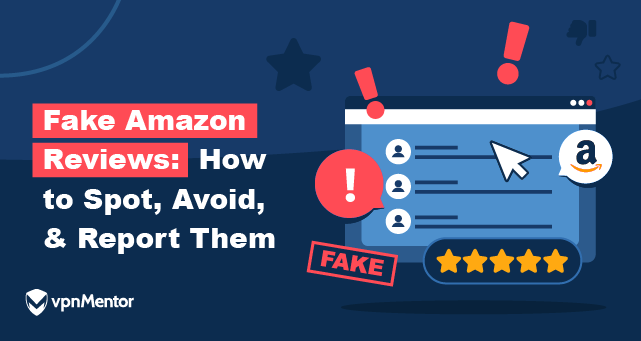


Please, comment on how to improve this article. Your feedback matters!